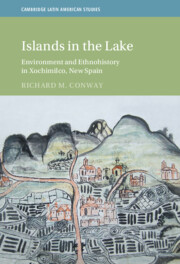Book contents
- Islands in the Lake
- Cambridge Latin American Studies
- Islands in the Lake
- Copyright page
- Dedication
- Contents
- Illustrations
- Preface
- Acknowledgments
- Introduction
- 1 Ecological and Political Landscapes
- 2 Land
- 3 Canoes and Commerce
- 4 Demography and Society
- 5 Crisis in the Seventeenth Century
- 6 Late Colonial Watersheds
- 7 Nahuatl Sources from Xochimilco
- Conclusion
- Glossary
- Bibliography
- Index
- Other Books in the Series (continued from page ii)
2 - Land
Published online by Cambridge University Press: 01 October 2021
- Islands in the Lake
- Cambridge Latin American Studies
- Islands in the Lake
- Copyright page
- Dedication
- Contents
- Illustrations
- Preface
- Acknowledgments
- Introduction
- 1 Ecological and Political Landscapes
- 2 Land
- 3 Canoes and Commerce
- 4 Demography and Society
- 5 Crisis in the Seventeenth Century
- 6 Late Colonial Watersheds
- 7 Nahuatl Sources from Xochimilco
- Conclusion
- Glossary
- Bibliography
- Index
- Other Books in the Series (continued from page ii)
Summary
This chapter addresses the history of chinampas, agriculture, and the rise of rural estates known as haciendas. It examines the construction, cultivation, and distribution of chinampas as well as the dispersed pattern of landholdings and the complexities of land tenure. The chapter observes the conspicuous absence of Spaniards and other non-Native peoples as the owners of chinampas. The chinampas became a source of contestation within the indigenous community, though, since claims of the communal, usufruct rights to chinampas rubbed up against efforts by the nobility to shore up their holdings through private ownership. In the sixteenth century, demographic decline and the competing demands of the colonial government, anxious about provisioning Mexico City during periods of food insecurity, forced a restructuring of land tenure classifications. At the same time, Spaniards received grants to establish ranches away in the nearby hills where they and Nahuas introduced livestock. As a consequence of all this, a distinctive historical geography came into being, with chinampas and intensive, small-scale horticulture in the lakes, and extensive pastoralism in the upland areas.
Keywords
- Type
- Chapter
- Information
- Islands in the LakeEnvironment and Ethnohistory in Xochimilco, New Spain, pp. 84 - 127Publisher: Cambridge University PressPrint publication year: 2021

